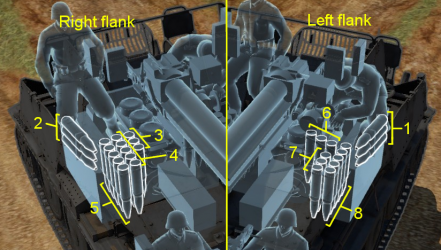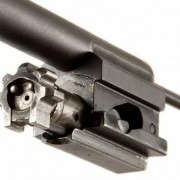Углеродное чудо или как графен изменит наш мир
Содержание:
Искусственная паутина
Загадочное природное явление – паутина обыкновенная – поражает людей необычностью свойств с древних времен. С одной стороны – невероятная прочность при малой толщине нити. Если посчитать, то выясняется, что сталь далеко не так крепка и надежна, как паутина, просто никакого сравнения.
Паутина имеет не только уникальную прочность, есть еще одно свойство, не менее интересное – паутина сохраняет натяжение в экстремальных условиях, когда окружающая среда крайне агрессивна. Это свойство – не провисать – исследовали ученые во Франции и Великобритании.
Паутинная нить существует в двух абсолютно противоположных фазах – имеет свойство одновременно сжиматься, как жидкости, и растягиваться, как твердые тела. Именно это состояние делает паутину в три раза прочнее самых прочных созданных человеком синтетических нитей, например, нейлона. Данное открытие, как считают ученые, может совершить прорыв не только в науке, но и в технологиях, в частности, в строительных.
Один из секретов паутины был раскрыт. Клейкое вещество, находящееся на паутинных нитках, предназначено природой не только для ловли мух. Как оказалось, у этой паучьей слюны имеется и другая функция. Данный клей работает по типу самосжимающейся пружины, когда воздействия – ветра – нет, клеевые капли сматывают в себя паутину, как в клубок, а при увеличении нагрузок – отпускают, тонко регулируя стабильность поверхностного натяжения паутины.
Жидкая нитка была воссоздана лабораторно. Новый биотехнологический материал – искусственная паутина – был создан из тончайших пластиковых проводов и склеивающего вещества на основе масла. Поведение синтетической паутины, как конструкции, не отличается от настоящей.
Разработчики идеи утверждают, что волокна синтетической паутины возможно сделать практически из любого материала. Перспективы созданной человеком по природному образцу паутины – на настоящее время развитие микротехнологий и реверсивные микродвигатели, а что значат для строительства сверхлегкие волокна с прочностью стали, как для производства новых стройматериалов, так и для развития технологий… никакой фантастике не снилось.
How graphene is made
The quality of graphene plays a crucial role as the presence of defects, impurities, grain boundaries, multiple domains, structural disorders, wrinkles in the graphene sheet can have an adverse effect on its electronic and optical properties.
In electronic applications, the major bottleneck is the requirement of large size samples, which is possible only in the case of CVD process, but it is difficult to produce high quality and single crystalline graphene thin films possessing very high electrical and thermal conductivities along with excellent optical transparency.
Another issue of concern in the synthesis of graphene by conventional methods involves the use of toxic chemicals and these methods usually result in the generation hazardous waste and poisonous gases. Therefore, there is a need to develop green methods to produce graphene by following environmentally friendly approaches.
The preparation methods for graphene should also allow for in situ fabrication and integration of graphene-based devices with complex architecture that would enable eliminating the multi step and laborious fabrication methods at a lower production cost (read more: «Mass production of high quality graphene: An analysis of worldwide patents»).
Currently, the most common techniques available for the production of graphene are shown schematically below, which includes micromechanical cleavage, chemical vapor deposition, epitaxial growth on SiC substrates, chemical reduction of exfoliated graphene oxide, liquid phase exfoliation (LPE) of graphite and unzipping of carbon nanotubes.
However, each of these methods can have its own advantages as well as limitations depending on its target application(s). In order to surmount these barriers in commercializing graphene, concerted efforts are being made by researchers at various R&D institutes, universities and companies from all over the globe to develop new methods for large scale production of low-cost and high quality graphene via simple and eco-friendly approaches.
Already, researchers have managed to produce large, single-crystal-like graphene films more than a foot long on virtually any flat surface – a step towards commercialization.
However – a big word of caution here: The global graphene production appears to suffer from serious quality issues and it appears that there is almost no high quality graphene, as defined by ISO, in the market yet. Read more: Beware the fake graphene.

Here on Nanowerk we keep an updated list of graphene manufacturers and suppliers and in our Nanowerk Product Catalog we have a list of well over 100 graphene products for sale.
No Google apps or services
GrapheneOS will never include either Google Play services or another implementation of Google services like microG. Those are not part of the Android Open Source Project and are not required for baseline Android compatibility. Apps designed to run on Android rather than only Android with bundled Google apps and services already work on GrapheneOS, so a huge number of both open and closed source apps are already available for it.
Open APIs not tied to Google will continue to be implemented using open source providers like the Seedvault backup app. Text-to-speech, voice-to-text, non-GPS-based location services, geocoding, accessibility services, etc. are examples of other open Android APIs where we need to develop/bundle an implementation based on existing open source projects. Compatibility with apps depending on Google APIs / services will be improved by implementing them in a way that pretends Google has stopped existing and the servers are unavailable.
Аккумулятор Графеновый Литий-полимерный Turnigy 500mAh 3S 65C
TURNIGY давно уже стал для моделистов синонимом производительности и надежности. Настало время инноваций и TURNIGY рады представить новые батареи Turnigy Graphene (Графен)!
Что же это значит для Вас? Это значит не только то что Графеновые батареи нечто сложное чем то, что вы использовали раньше.
В Turnigy Graphene используется углерод чтобы сформировать в структуре батареи единый слой графена толщиной 0.335 нанометров.
Графен — материал прочнее стали, но обладает практически сверхпроводимостью при такой малой толщине, что позволяет электронам течь с меньшим сопротивлением по сравнению с традиционной Литиево-Полимерной батареей.
Результатом этого является батарея способная при нагрузке поддерживать высокую выходную мощность, оставаясь при этом значительно холоднее. Тепло и сопротивление были главной проблемой батарей, Графен значительно уменьшил их, а также невероятно продлил срок службы.
Графеновые батареи – новый стандарт для серьезных любителей.
Характеристики:
Емкость: 500 mAhКонфигурация: 3S1P / 3 банки / 11.1 ВольтРазряд: 65C Постоянный / 130C КратковременныйВес: 58г (включая провода, разъемы и термоусадку)Размеры: 56*31*22ммБалансировочный разъем: JST-XHСиловой разъем: XT-60
Примечание: Графеновым Литиево-Полимерным батареям требуется такое же зарядное устройство, как и для традиционных Литиево-Полимерных батарей.
Преимущества перед традиционными Литиево-Полимерными батареями.• Удельная мощность: 0.15-0.17kw/kg (5Ah-16Ah)• Удельная мощность: 0.13-0.15kw/kg (1Ah-4.9Ah).• Стабильно высокий вольтаж при длительном использовании. • Высокий разряд, что дает больше мощности под нагрузкой• Внутреннее сопротивление графеновой батареи 1.2мO, в то время как у стандартной Li-Po батареи 3 мО.• Батареи остаются на много холоднее в экстремальных условиях использования.• Более высокая мощность при сильном разряде.• Сохраняет емкость даже после сотен циклов заряд-разряд. • Быстрый заряд батареи, до 15С для некоторых батарей.• Долгая жизнь батареи (как сообщается – свыше 900! циклов заряд-разряд при тестировании).
>Свинцово-углеродные (графеновые) аккумуляторы
Graphene-enhanced battery products moving towards commercialization
Graphene-based batteries have exciting potential and while they are not yet fully commercially available yet, R&D is intensive and will hopefully yield results in the future.
In December 2018, India-based Log 9 Materials announced that it is working on graphene-based metal-air batteries, that in theory may even lead to electric vehicles that run on water. The metal air batteries use a metal as anode, air (oxygen) as cathode and water as an electrolyte. A graphene rod is used in the air cathode of the batteries. Since Oxygen has to be used as the cathode, the cathode material has to be porous to let the air pass, a property in which graphene excels. According to Log 9 Materials, the graphene used in the electrode is able to increase the battery efficiency by five times at one-third the cost.
In November 2017, Samsung developed a unique «graphene ball» that could make lithium-ion batteries last longer and charge faster. In fact, Samsung Advanced Institute of Technology (SAIT) said that using the new graphene ball material to make batteries will increase their capacity by 45% and make their charging speed five times faster. It was also said that the Samsung battery that will use this graphene ball material will be able to maintain a temperature of 60 degrees Celsius that is required for use in electric cars.
In November 2016, Huawei unveiled a new graphene-enhanced Li-Ion battery that can remain functional at higher temperature (60° degrees as opposed to the existing 50° limit) and offers a longer operation time — double than what can be achieved with previous batteries. To achieve this breakthrough, Huawei incorporated several new technologies — including an anti-decomposition additives in the electrolyte, chemically stabilized single crystal cathodes — and graphene to facilitate heat dissipation. Huawei says that the graphene reduces the battery’s operating temperature by 5 degrees.
In June 2014, US based Vorbeck Materials announced the Vor-Power strap, a lightweight flexible power source that can be attached to any existing bag strap to enable a mobile charging station (via 2 USB and one micro USB ports). the product weighs 450 grams, provides 7,200 mAh and is probably the world’s first graphene-enhanced battery.

In May 2014, American company Angstron Materials rolled out several new graphene products. The products, said to become available roughly around the end of 2014, include a line of graphene-enhanced anode materials for Lithium-ion batteries. The battery materials were named “NANO GCA” and are supposed to result in a high capacity anode, capable of supporting hundreds of charge/discharge cycles by combining high capacity silicon with mechanically reinforcing and conductive graphene.

Developments are also made in the field of graphene batteries for electric vehicles. Henrik Fisker, who announced its new EV project that will sport a graphene-enhanced battery, unveiled in November 2016 what is hoped to be a competitor to Tesla. However, the Fisker battery was later announced to not rely on graphene.
In August 2014, Tesla suggested the development of a «new battery technology» that will almost double the capacity for their Model S electric car. It is unofficial but reasonable to assume graphene involvement in this battery.
Many other companies are also working on incorporating graphene into various kinds of batteries, for more information we recommend reading our Graphene Batteries Market Report.
Описание графена
Чтобы понять, что это такое графен, достаточно провести карандашом по бумаге. Графитовый след будет состоять из слоя кристаллов этого вещества. Грифель состоит из множества слоёв кристаллических решёток нановещества. Такой материал, как графен, представляет собой слой атомов углерода, объединённых в форму шестигранных сот.
 Структура графена
Структура графена
На рисунке в левом нижнем углу изображен графит, его можно обнаружить в простом карандаше. Его структура выглядит, как слои торта. Прочные пласты графена перемежаются слабыми прослойками. Свёрнутые листы в виде трубки или шара называют фуллеренами. Их подразделяют на цилиндры – углеродные нанотрубки (в нижнем ряду по центру) и на сферы – бакиболсы (там же справа).
Механические методы
| Графен |
| H^K=−iℏvFσ→⋅∇→{\displaystyle {\hat {H}}_{K}=-i\hbar v_{F}{\vec {\sigma }}\cdot {\vec {\nabla }}} |
| Физика графена Математическая формулировка … |
|
Основа Квантовая механика · Уравнение Дирака · Двумерный кристалл Нейтрино · (2+1)-мерная КЭД · Постоянная тонкой структуры · Фаза Берри · Углеродные нанотрубки |
|
Фундаментальные понятия История ·Зонная структура · Уравнение Дирака · Хиральность · Гексагональная решётка · Волновая функция · Точка электронейтральности · e-h лужи · Видимость графена · Фаза Берри · Двухслойный графен |
|
Получение и технология Получение графена · Механическое расщепление · Химические методы получения · Эпитаксия на металлы · Подвешенный графен · Верхний затвор · Перенос графена |
|
Применения Применение графенаГрафеновый полевой транзисторГрафеновые наноленты |
|
Транспортные свойства Электроны и дырки · Проводимость · Фононы· Парадокс Клейна · Линза Веселаго · 1/f · Дробовой шумСлучайный телеграфный сигнал · p — n переход · Ферми-жидкость |
|
Магнитное поле Магнетосопротивление · Осцилляции Шубникова — де Гааза · КЭХ · Спиновый квантовый эффект Холла · ДКЭХ · Осцилляции Вейса · Магнетоэкситоны · Сверхпроводимость · Слабая локализация · Эффект Ааронова — Бома |
|
Оптика графена Рамановское рассеяние света · α |
|
Известные учёные Андре Гейм · Константин Новосёлов · Филипп Ким · Михаил Кацнельсон |
| См. также: Портал:Физика |
Основная статья: Механическое расщепление
Рис. 1. Кусочки тонких слоёв графита, полученные в процессе отшелушивания, на поверхности липкой ленты.
При механическом воздействии на высокоориентированный пиролитический графит или киш-графит можно получить плёнки графена вплоть до ~100 мкм. Сначала тонкие слои графита помещают между липкими лентами и отщепляют раз за разом плёнки графита, пока не будет получен достаточно тонкий слой (среди многих плёнок могут попадаться и однослойные, которые и представляют интерес). После отшелушивания скотч с тонкими плёнками графита и графена прижимают к подложке окисленного кремния. При этом трудно получить плёнку определённого размера и формы в заранее известных местах подложки (горизонтальные размеры плёнок составляют обычно около 10 мкм). Найденные с помощью оптического микроскопа (они слабо видны при толщине диэлектрика 300 нм) плёнки подготавливают для измерений. С помощью атомно-силового микроскопа определяют реальную толщину плёнки графита (она может варьироваться в пределах 1 нм для графена). Графен можно также определить при помощи рамановского рассеяния света или измерением квантового эффекта Холла. Используя электронную литографию и реактивное плазменное травление, задают форму плёнки для электрофизических измерений (холловский мост для магнитотранспортных измерений).
Альтернативный метод предложен в работе. Метод заключается в том, что окисленную подложку кремния покрывают эпоксидным клеем (в работе использовался слой толщиной ~10 мкм) и тонкую пластинку графита прижимают к клею при помощи пресса. После удаления графитовой пластинки с помощью липкой ленты на поверхности клея остаются области с графеном и графитом. Толщину графита определяли с помощью комбинационного рассеяния света и атомно-силовым микроскопом измеряли шероховатость графена, которая оказалась равной всего 0.16 нм (в два раза меньше шероховатости графена на подложке кремния).
В статье предложен метод печати графеновых электрических схем (ранее этот метод использовался для печати тонкоплёночных транзисторов на основе нанотрубок и для органической электроники.). Сам процесс печати состоит из последовательного переноса с подложки Si/SiO2 золотых контактов, графена и наконец диэлектрика (PMMA) с металлическим затвором на прозрачную подложку из полиэтилентерефталата (ПЭТФ) предварительно нагретую выше температуры размягчения до 170 °C, благодаря чему контакты вдавливаются в ПЭТФ, а графен приобретает хороший контакт с материалом подложки. При таком методе нанесения графена подвижность не становится меньше, хотя и появляется заметная асимметрия между электронной (μe=10000 см2В−1с−1) и дырочной (μh=4000 см2В−1с−1) областями проводимости. Этот метод пригоден для нанесения графена на любую подложку, пригодную, в частности, для оптических измерений.
Graphene and batteries
Graphene, a sheet of carbon atoms bound together in a honeycomb lattice pattern, is hugely recognized as a “wonder material” due to the myriad of astonishing attributes it holds. It is a potent conductor of electrical and thermal energy, extremely lightweight chemically inert, and flexible with a large surface area. It is also considered eco-friendly and sustainable, with unlimited possibilities for numerous applications.
The advantages of graphene batteries
In the field of batteries, conventional battery electrode materials (and prospective ones) are significantly improved when enhanced with graphene. A graphene battery can be light, durable and suitable for high capacity energy storage, as well as shorten charging times. It will extend the battery’s life, which is negatively linked to the amount of carbon that is coated on the material or added to electrodes to achieve conductivity, and graphene adds conductivity without requiring the amounts of carbon that are used in conventional batteries.
Graphene can improve such battery attributes as energy density and form in various ways. Li-ion batteries (and other types of rechargeable batteries) can be enhanced by introducing graphene to the battery’s anode and capitalizing on the material’s conductivity and large surface area traits to achieve morphological optimization and performance.
It has also been discovered that creating hybrid materials can also be useful for achieving battery enhancement. A hybrid of Vanadium Oxide (VO2) and graphene, for example, can be used on Li-ion cathodes and grant quick charge and discharge as well as large charge cycle durability. In this case, VO2 offers high energy capacity but poor electrical conductivity, which can be solved by using graphene as a sort of a structural “backbone” on which to attach VO2 — creating a hybrid material that has both heightened capacity and excellent conductivity.
Another example is LFP ( Lithium Iron Phosphate) batteries, that is a kind of rechargeable Li-ion battery. It has a lower energy density than other Li-ion batteries but a higher power density (an indicator of of the rate at which energy can be supplied by the battery). Enhancing LFP cathodes with graphene allowed the batteries to be lightweight, charge much faster than Li-ion batteries and have a greater capacity than conventional LFP batteries.
In addition to revolutionizing the battery market, combined use of graphene batteries and graphene supercapacitors could yield amazing results, like the noted concept of improving the electric car’s driving range and efficiency. While graphene batteries have not yet reached widespread commercialization, battery breakthroughs are being reported around the world.
Batteries and supercapacitors
While there are certain types of batteries that are able to store a large amount of energy, they are very large, heavy and release energy slowly. Capacitors, on the other hand, are able to charge and discharge quickly but hold much less energy than a battery. The use of graphene in this area, though, presents exciting new possibilities for energy storage, with high charge and discharge rates and even economical affordability. Graphene-improved performance thereby blurs the conventional line of distinction between supercapacitors and batteries.
 Graphene batteries combine the advantages of both batteries and supercapacitors
Graphene batteries combine the advantages of both batteries and supercapacitors













